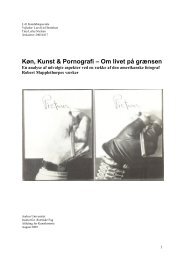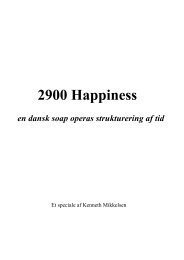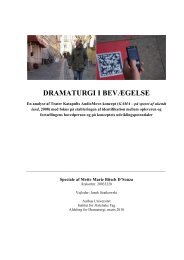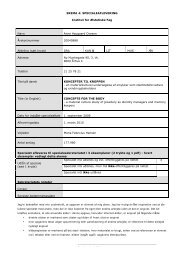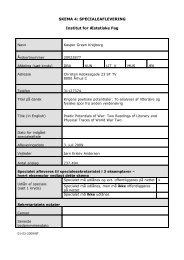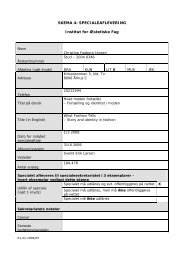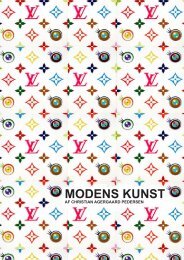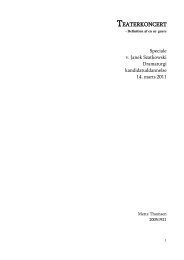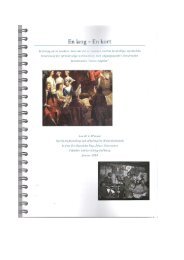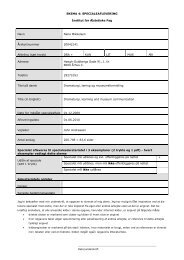Afdeling for Æstetik og Kultur — Tværæstetiske Studier - AU Library ...
Afdeling for Æstetik og Kultur — Tværæstetiske Studier - AU Library ...
Afdeling for Æstetik og Kultur — Tværæstetiske Studier - AU Library ...
You also want an ePaper? Increase the reach of your titles
YUMPU automatically turns print PDFs into web optimized ePapers that Google loves.
Speciale af Helle Børsen Rosholm Vejleder Hans Jørgen Frederiksen<br />
Årskortnummer 20032411<br />
As an artist, Gauguin found that diverse works from distinctly different cultures could, on a<br />
<strong>for</strong>mal basis, be lumped t<strong>og</strong>ether as they had certain proporties in common: they did not<br />
imitate any observable reality, nor did they seem to create a three-dimensional reality;<br />
there<strong>for</strong>e, scale and proportion took a new meaning. The notion of the ”primitive” was eagerly<br />
discussed in France as elsewhere in the 19. century. Various discliplines studied and compared<br />
the ”primitive” in prehistory, in childhood and in tribal societies, as evidence <strong>for</strong> their<br />
arguments over man’s limitations, potentials and place in natural order, and the ”primitive”<br />
was often used as a positive or negative reflection of the Western, industrialized society.<br />
Many ideas regarding the ”primitive” were closely tied with the exoticism of the Romantic<br />
period. Exoticism was the ge<strong>og</strong>raphical counterpart of historicism’s emulation of the<br />
temporally distant; often, the two tended to flow into one another and it was these conceptions<br />
of the ”primitive” that inspired Gauguin to travel to <strong>for</strong> instance Brittany and Tahiti.<br />
By the art critic Albert Aurier, Gauguin was declared the leader of the Symbolist movement in<br />
painting in 1891.The Symbolist movement was a part of a broad anti-materialist and antirationalist<br />
trend in ideas and art, notions that Gauguin was discussing with passion with his<br />
fellow artists. They experimented with artistic innovations that in many ways were connected<br />
with cultural and philosophical trends of the last three decades of the 19. century. Inspired by<br />
various philosphical and religious theories they established a new relationship between <strong>for</strong>m<br />
and content, style and subject matter in the interest of giving personal experience and emotion<br />
meaning at a universal, human level. Many of these theories were adapted in parts and<br />
synthesized into a more modern context, and hybrids of convictions seemed to be the<br />
standard, as <strong>for</strong> example the theosophy, which contends to be a synthesis of all religions. Its<br />
principal doctrines were a pantheistic evolution and reincarnation, while the only morality it<br />
demanded was an adhesion to the brotherhood of man. Gauguin reflected over these notions in<br />
presenting himself <strong>for</strong> example in the role of en Initiate at the inn in Le Pouldu, much as he<br />
had adopted the guise of an outlaw or a Christ in other self-portraits.<br />
In many of Gauguin’s Symbolic paintings, reality was the starting point but more was<br />
expressed about it than was visible to the eye and Gauguin was inspired by the thought that<br />
colour and line in themselves could express ideas or feelings. One of the major qualities of<br />
these works of art was the ambiguity that Gauguin gained through his eclectic working<br />
methods.<br />
90





